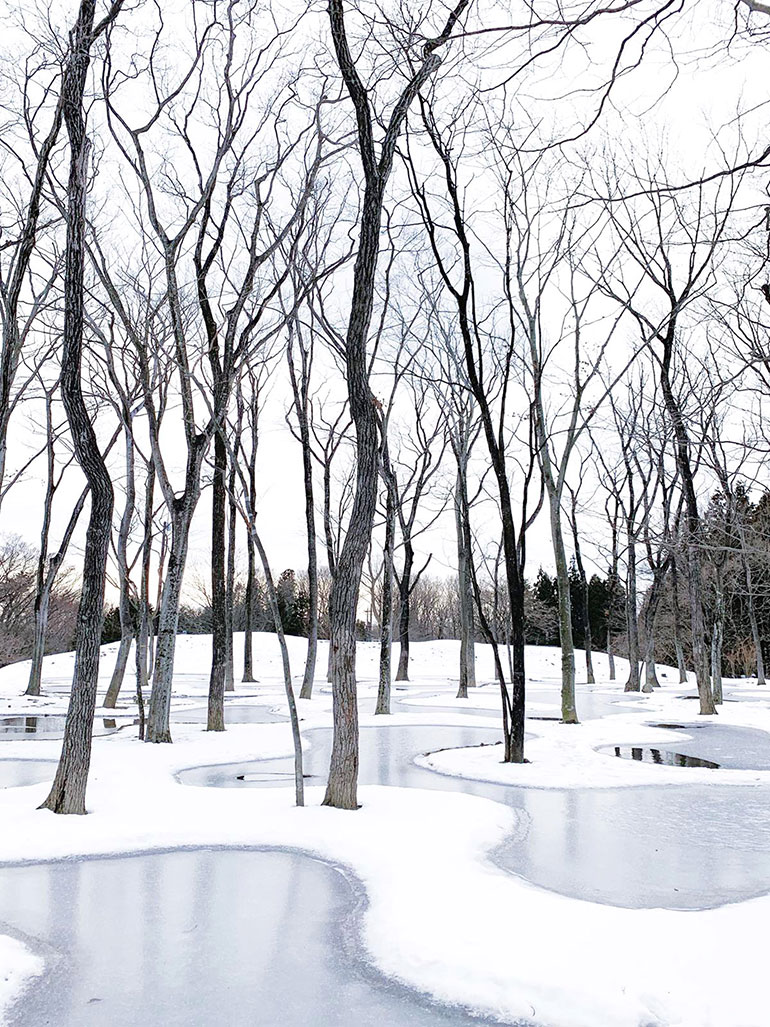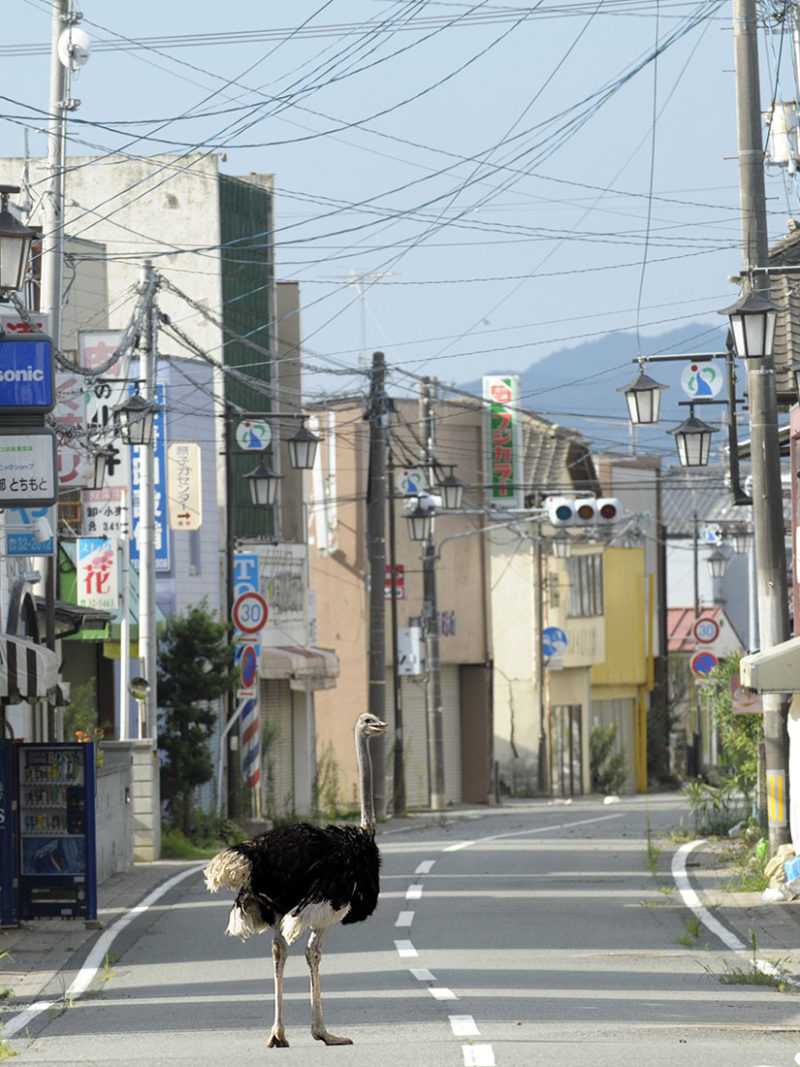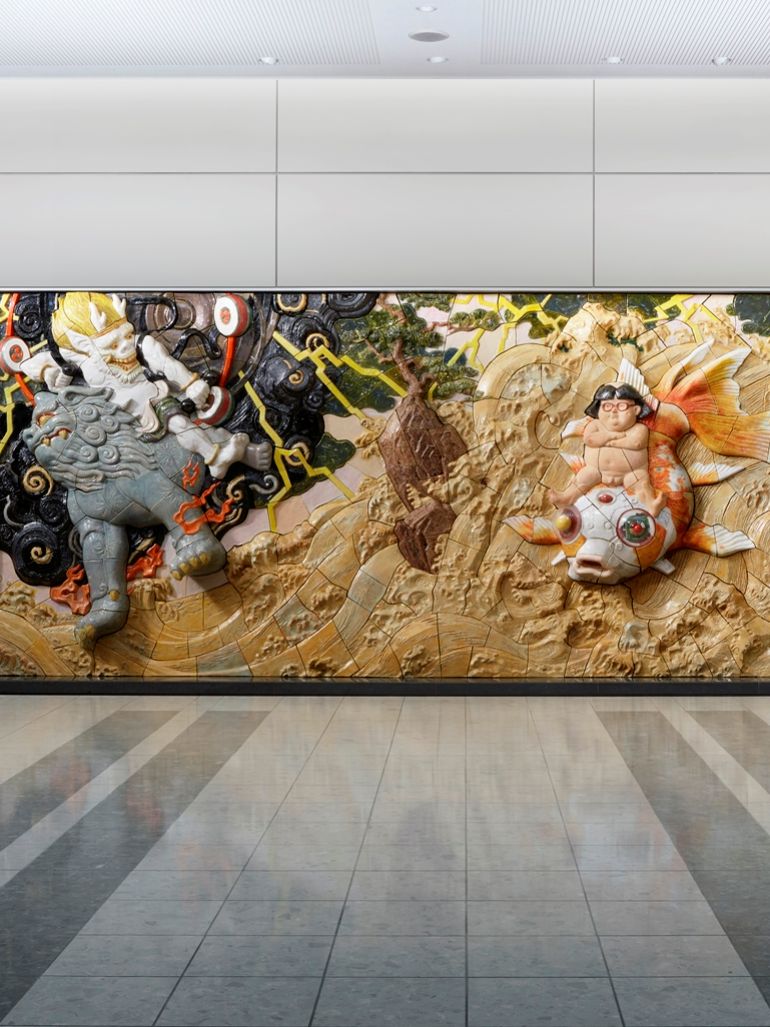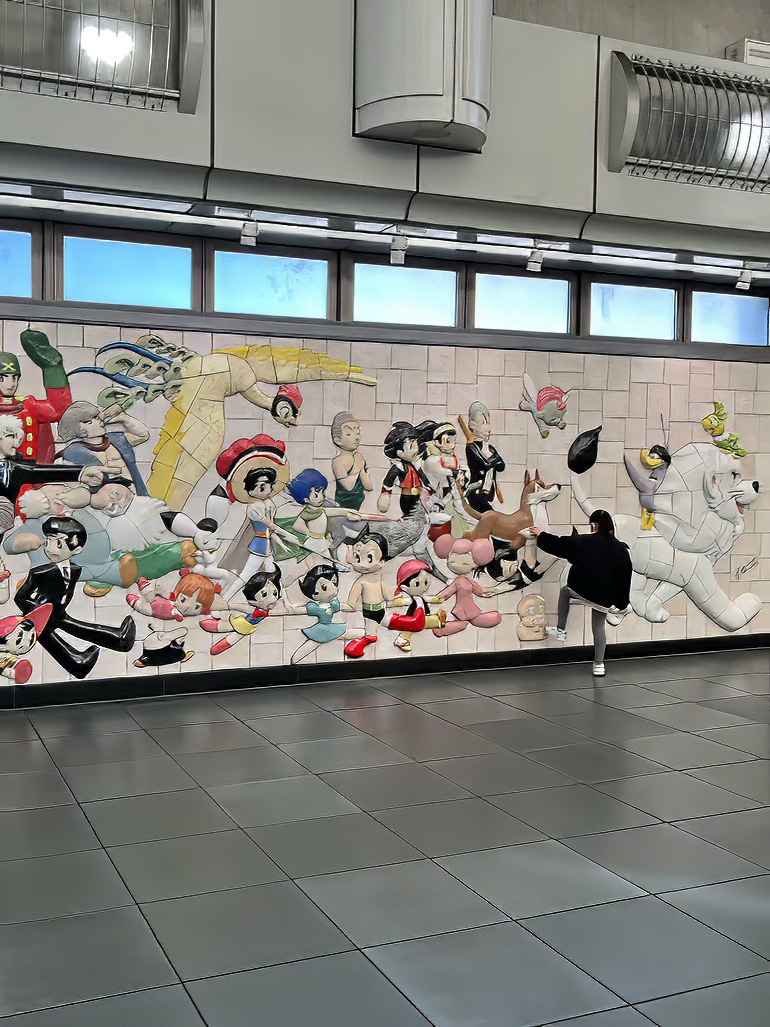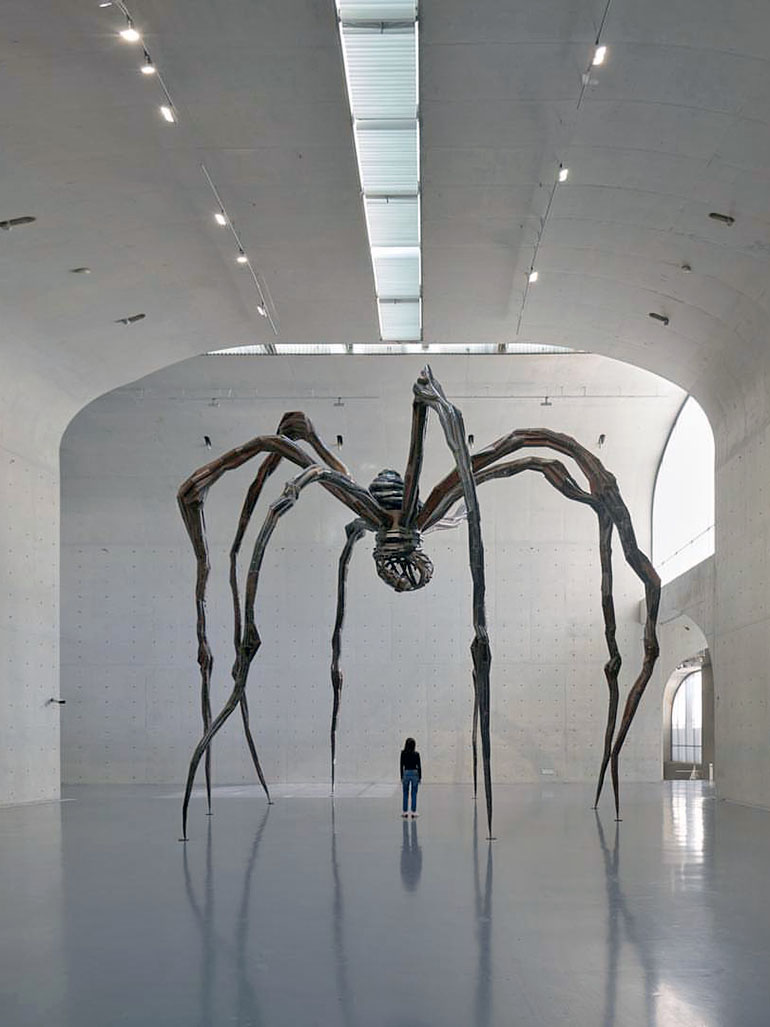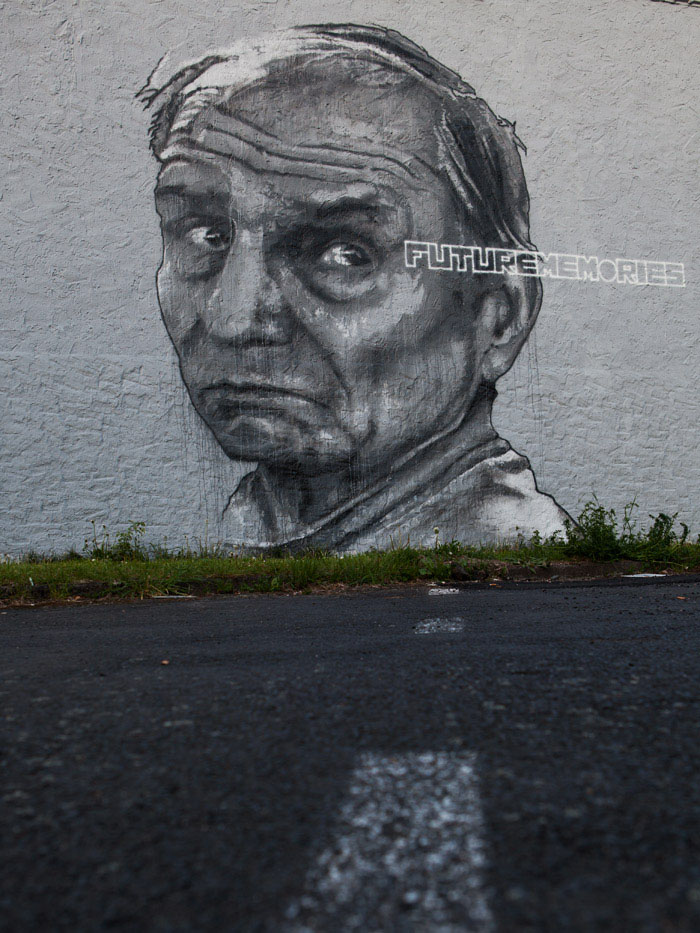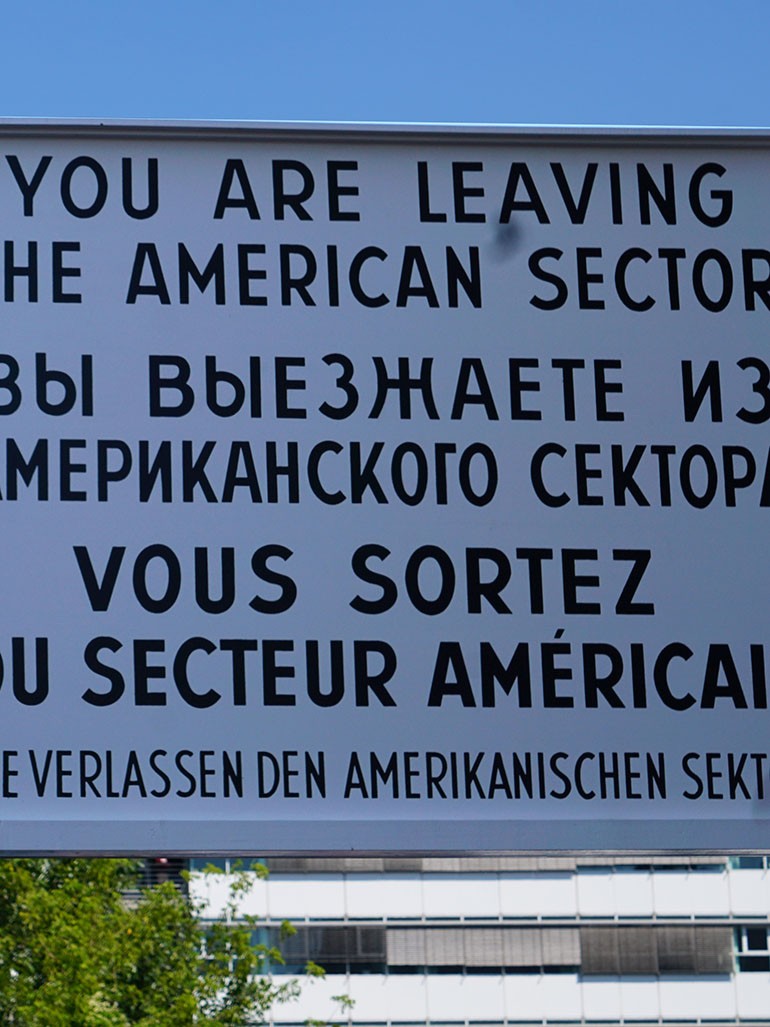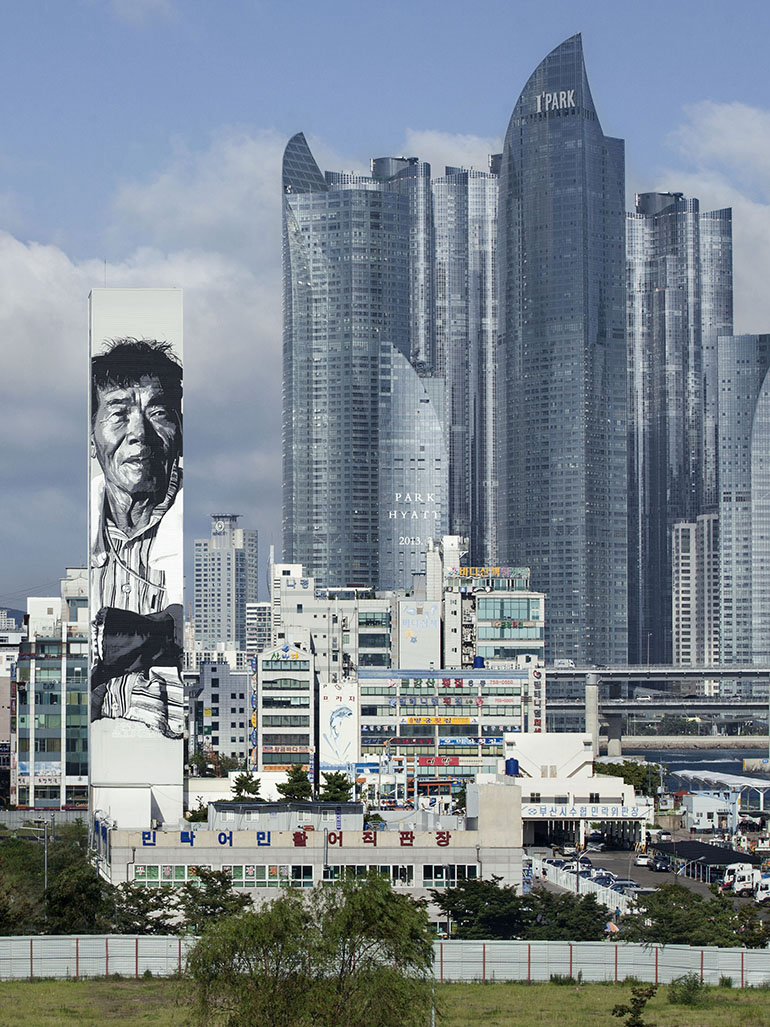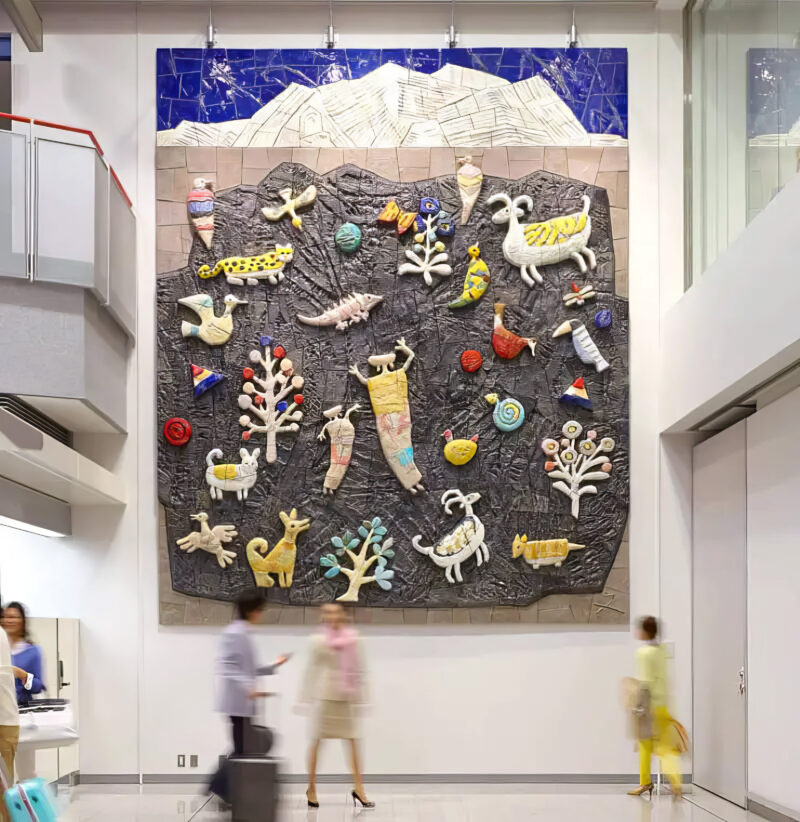
Japan, Fukushima, Kitasugama, Habakida−21 Copy to clipboard
37.226772, 140.433508 Copy to clipboard
6:30 ~ 21h
Best visit time
Visit during daylight hours for optimal visibility and atmosphere. Mornings at airports tend to be less crowded, offering a quieter, more contemplative experience.
Directions
From Fukushima
Car: The quickest way. Take National Route 13 towards Nihonmatsu, then follow the signs to the airport. Approximately a 40-minute drive.
Public bus: Direct bus services are available from Fukushima Station to the airport. Takes about 50 minutes.
From Tokyo
Train & bus: Take the Shinkansen (bullet train) from Tokyo Station to Fukushima Station (about 1.5 hours). Transfer to a bus at Fukushima Station, which goes directly to the airport (about 50 minutes).
By car: A longer but scenic route. Drive via the Tohoku Expressway, exit at Fukushima-Nishi or Funehiki-Miharu IC, and follow signs to the airport. Approximately a 4-hour drive.
From Sendai
By train & bus: Take a train from Sendai Station to Fukushima Station (about 1 hour). Then, take a bus from Fukushima Station to Fukushima Airport (about 50 minutes).
Direct bus: Limited services may be available directly from Sendai to the airport. Check current schedules as these may vary.
By car: Take the Tohoku Expressway to the Fukushima-Nishi IC, then follow the signs to the airport. About a 2-hour drive.
Tips
Check schedules in advance: Public transport schedules can vary, especially on weekends and holidays, so it's wise to check the latest times before you travel.
Renting a car: If you're coming from Tokyo or Sendai and prefer the flexibility of driving, consider renting a car.
Introduction
Fumiko Hori 1 supervised the installation of the mural 2 herself, quite an impressive feat for a woman aged 95 at the time. The giant relief wall was based on Hori’s original painting at the CREARE Atami-Yugawara Studio 3.
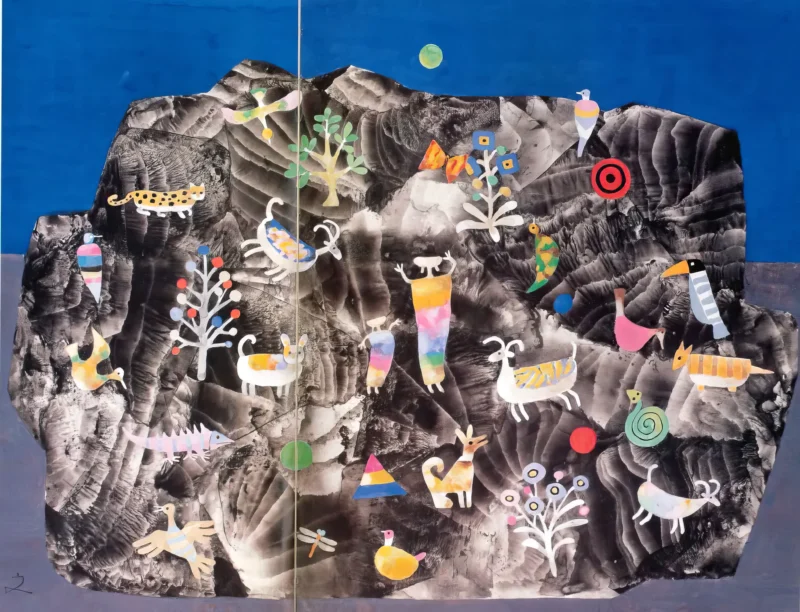
The relief carving at the airport 4 helps to create an illusion of depth on an otherwise shallow surface. The mural was also commissioned as a symbol of hope and reconstruction, paying homage to the people that have suffered or, worse, lost their loved ones to the earthquake, tsunami, and nuclear disasters that have ravaged the region for decades.
Hori envisioned it as a beacon of hope and a reminder of the delicate balance between humans and nature. Through the depiction of a harmonious existence among all living beings, the mural aspires to mirror the community’s resilience and dreams for a peaceful and restored future.
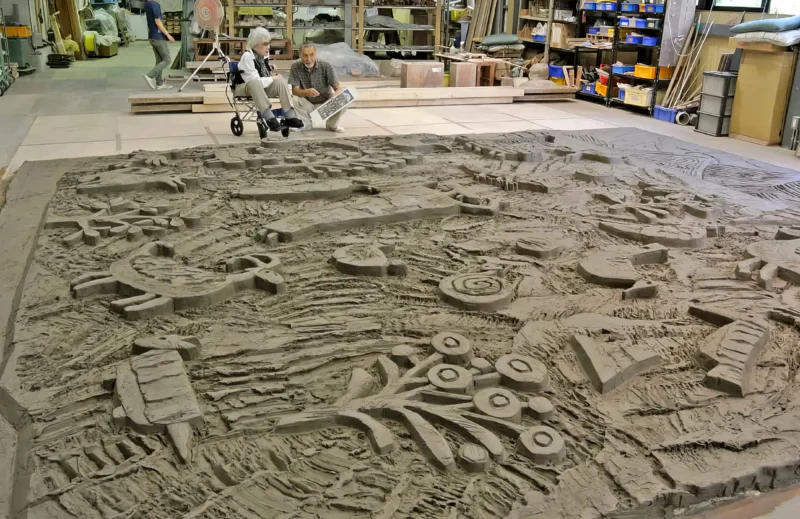
After enduring these disasters, the prefecture saw it fit to create a comprehensive plan to revitalize the area to recreate a new region full of dreams, smiles, and hope for all residents.
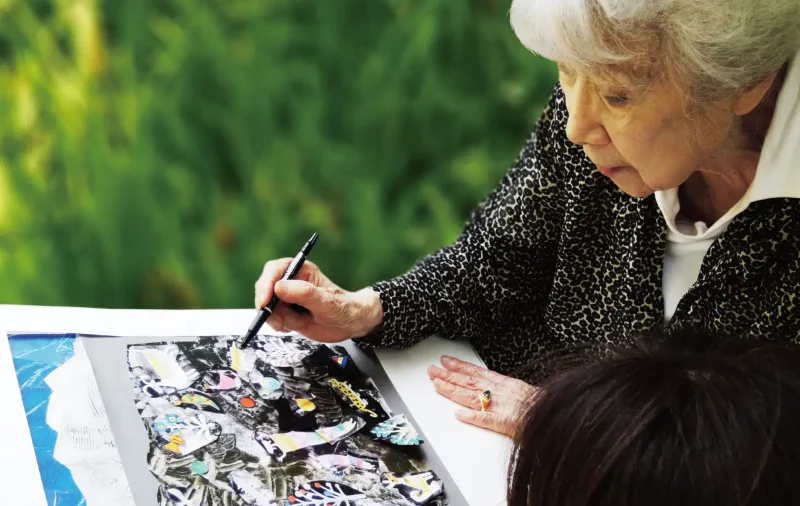
The team at the CREARE Atami-Yugawara Studio worked hard to reproduce the original work, not only in terms of color but texture as well, trying to create a feeling that makes people “want to touch it”. They used clay that was later baked and glazed before being dried and painted.
The creation of the mural took a team of 10 skilled craftsmen nearly 10 months to complete. The intricate work was meticulously segmented into 583 individual pieces, each carefully formed, glazed, and fired.
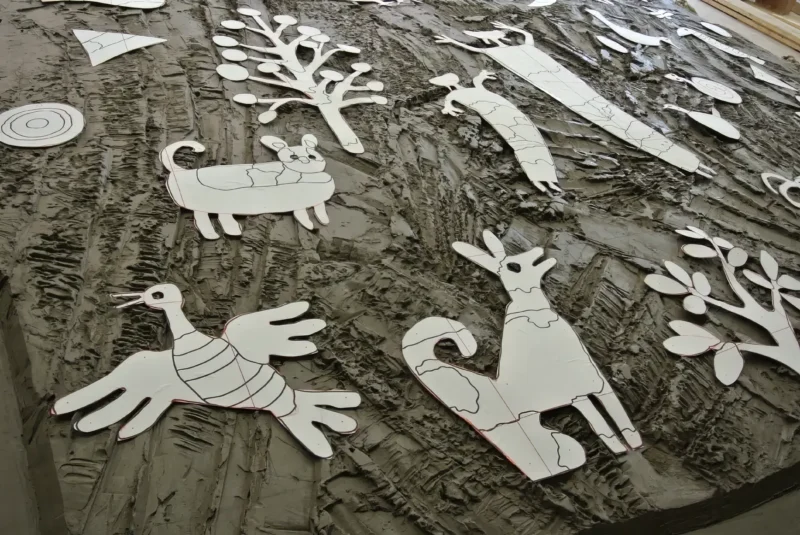
To ensure that the team got the colors and texture right, Ms. Hori and the studio staff worked tirelessly for more than seven months to replace the shapes and colors of the original painting with ceramic 5 relief, adding the three-dimensional characteristics of sculpture and craftwork.
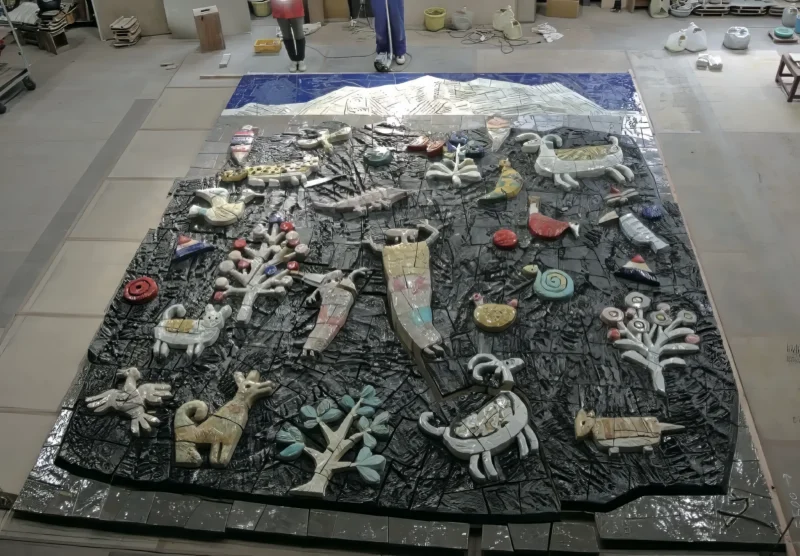
The ceramic relief was installed on the lobby of the first floor of the passenger terminal, which gives everyone, including locals and arriving visitors, a chance to enjoy the warmth and brightness of the relief.
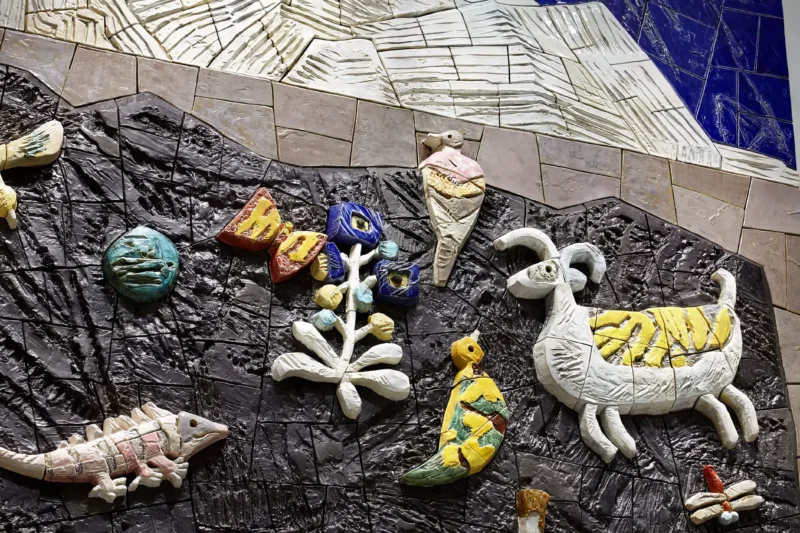
Fumiko Hori said the following 67 about Utopia:
Birds and animals, grass and trees, fishes, insects, people, all creatures in this world are the ones whose lives have been given from the life planet “Earth”. On the primitive earth, creatures were equally fulfilling their lives. Since I cannot overlook the current human’s arrogance that forgetting that the earth is not just human being’s, killing things inconvenient to humans, and starting the monopoly of the earth, I drew this picture with dreaming the utopia when all the lives were equal.
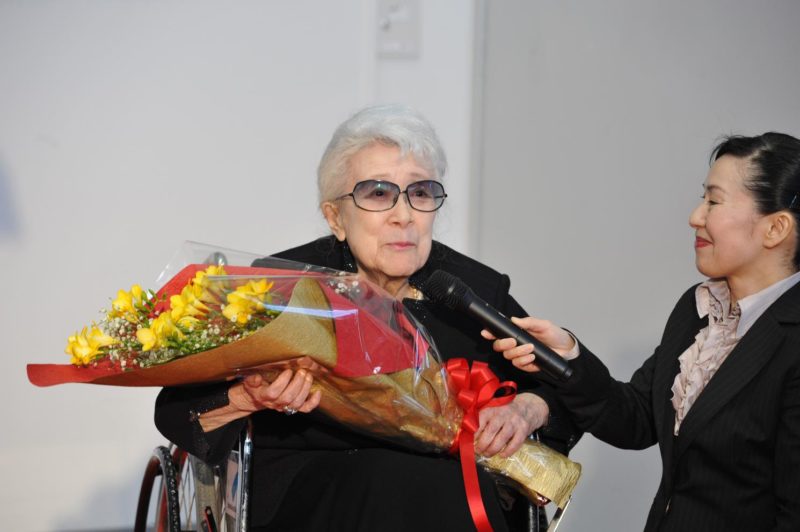
Visit
Situated in a space that serves as a gateway to many, the mural is part of a larger narrative of revival for Fukushima Airport. Following the earthquake’s impact, the airport has not only continued to function but has also embraced art and culture as part of its healing and rejuvenation process, symbolizing the region’s unwavering hope and perseverance.
About Fumiko Hori
Hori was raised in a scholarly family, which explains how she was able to attend the Women’s School of Fine Arts, currently known as the Joshibi University of Art and Design. While at the Women’s School, she learned Nihonga, the traditional Japanese 8 style and technique that she maintained for most of her life.
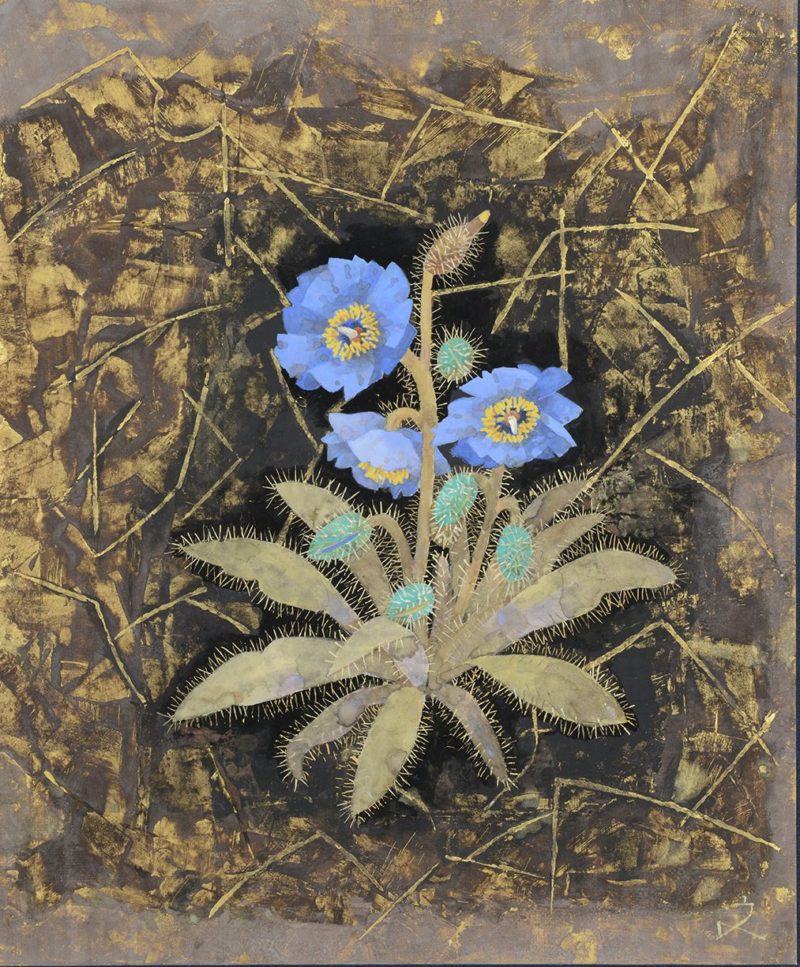
By 1952, she was already an acclaimed painter, even managing to win the Uemura Shōen Award, which is reserved for outstanding female painters in the country. After her husband’s passing, Hori decided to leave Japan for the first time and travel the world.
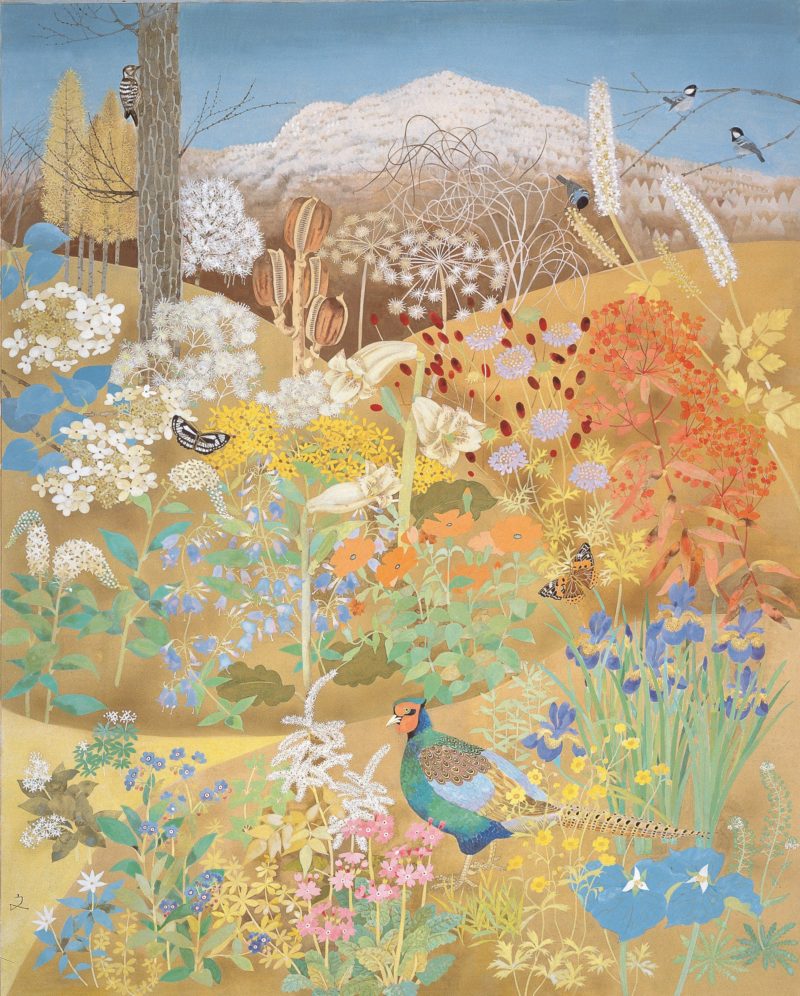
Upon her travels to various corners of the globe, including the US, Egypt, Mexico, and several European countries, she returned home and settled in the Kanagawa countryside, where she created works inspired by her adventurous travels.
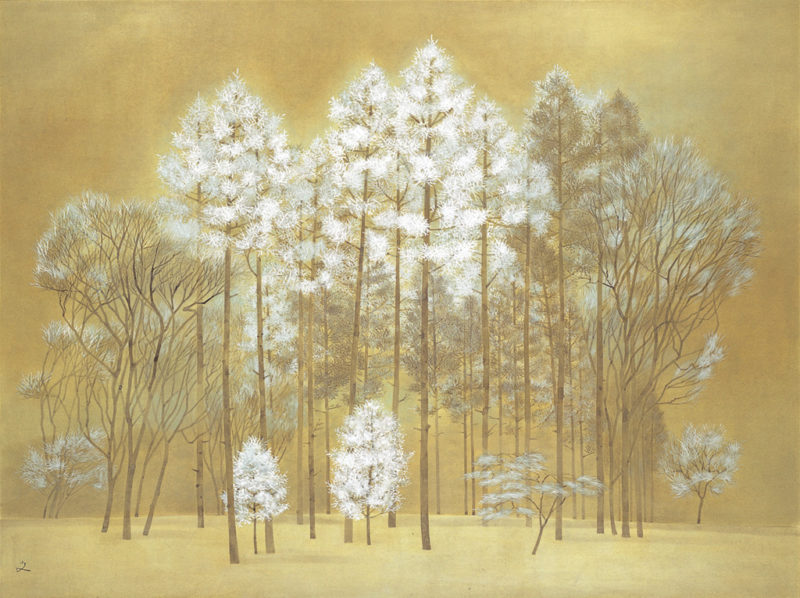
Her works were always inspired by nature. Flora and fauna were a central theme throughout her long and illustrious career. After suffering a life-threatening aneurysm in 2000, she began painting in another style. This time, she was inspired by the microorganisms she saw under the microscope. It was not until 2014 that her piece Utopia was installed at the Fukushima Airport.
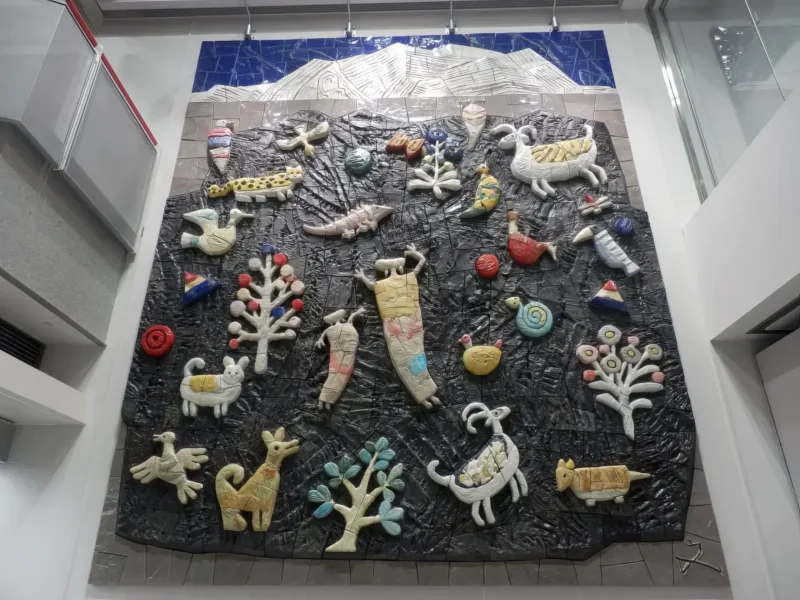
Hori continued to paint late into her final days. She passed away quietly, aged 100, in Hiratsuka, Kanagawa Prefecture. Her works are exhibited worldwide, but most of them are held in Hakone at the Narukawa Art Museum, which has more than 100 of her artworks. The Museum of Modern Art in Hayama hosted a retrospective of her works 910 between November 2017 and March 2018.
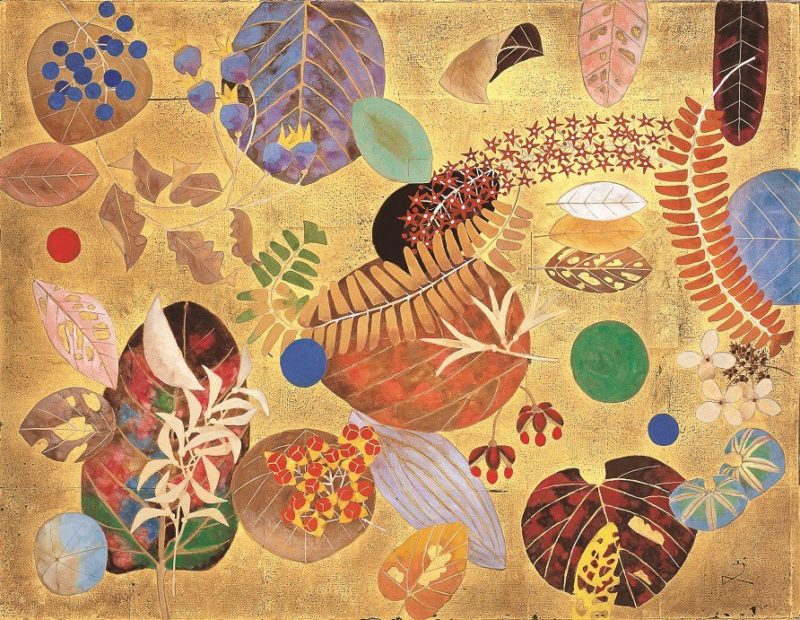
Explore nearby
Fukushima Airport, Japan
 Junya Ishigami's Art Biotop Water Garden44 km away
Junya Ishigami's Art Biotop Water Garden44 km away The abandoned animals of FukushimaPhoto documentation (2012)58 km away
The abandoned animals of FukushimaPhoto documentation (2012)58 km away Katsuhiro Otomo’s manga mural110 km away
Katsuhiro Otomo’s manga mural110 km away Osamu Tezuka's ceramic relief180 km away
Osamu Tezuka's ceramic relief180 km away Louise Bourgeois' Maman185 km away
Louise Bourgeois' Maman185 km away
